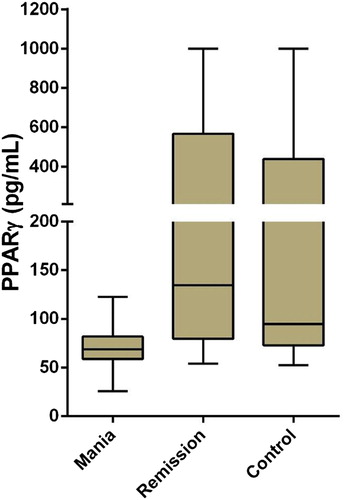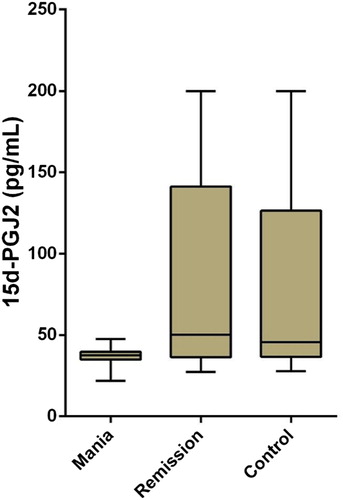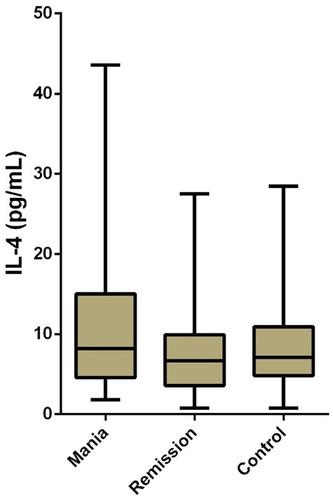Figures & data
Table 1. Comparison of mania, remission, and control groups in terms of age, gender, smoking, IL-4, PPARγ, and 15d-PGJ2.
Figure 1. Independent-samples Kruskal–Wallis test for PPARγ in mania, remission, and control groups.

Figure 2. Independent-samples Kruskal–Wallis test for 15d-PGJ2 in mania, remission, and control groups.


